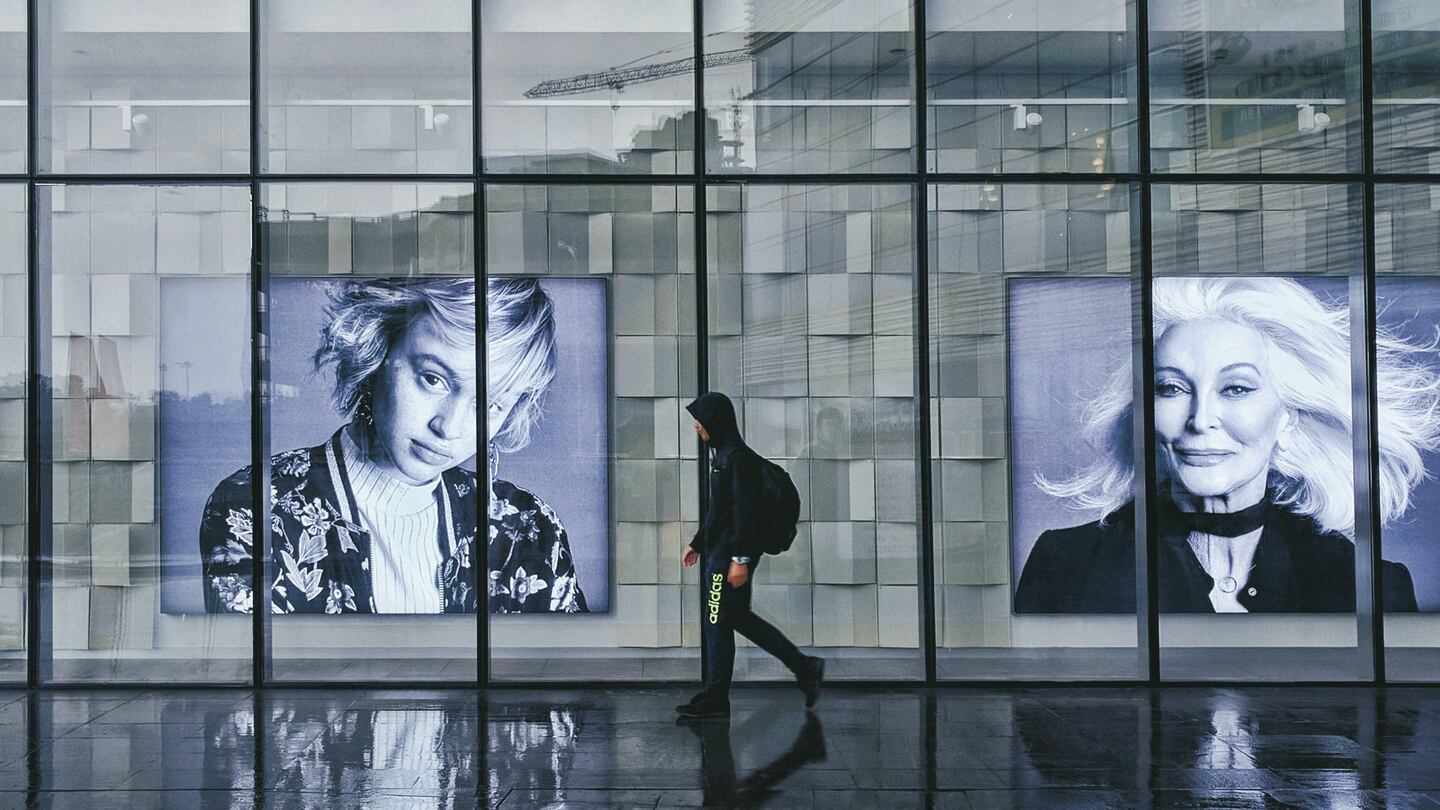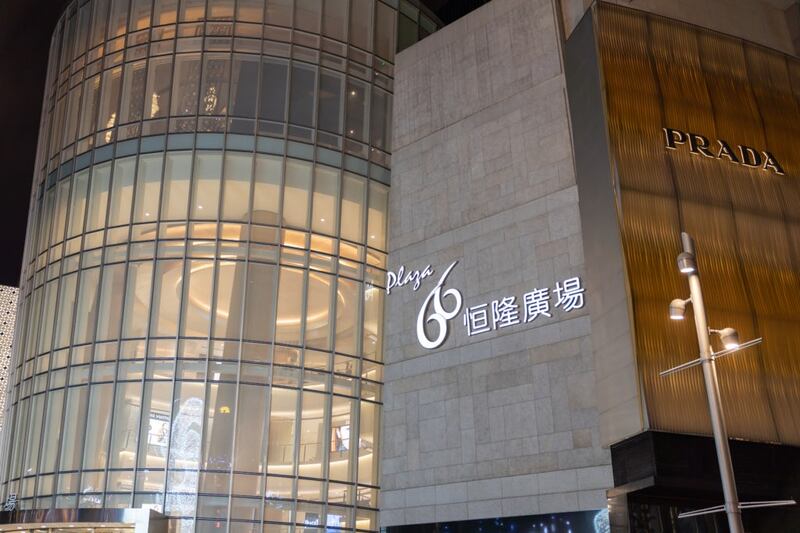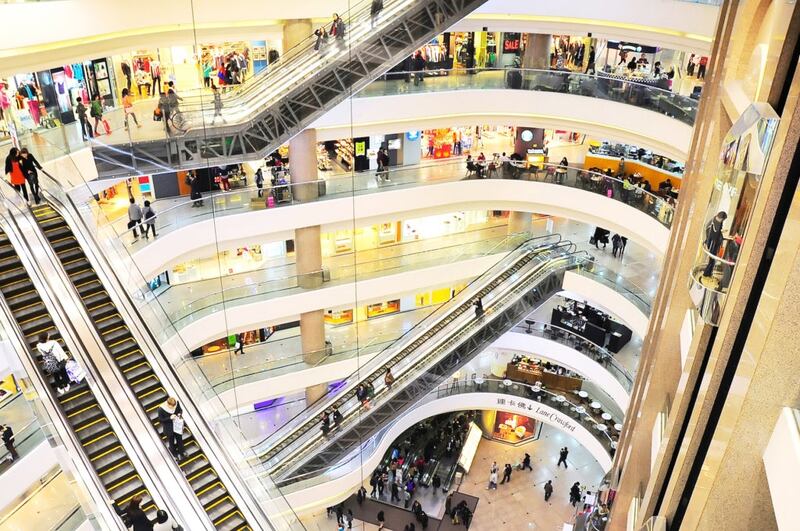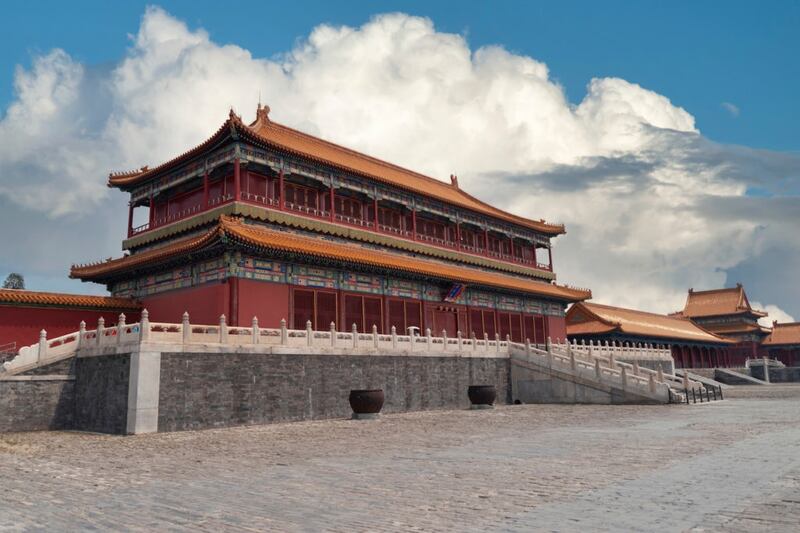
The Business of Fashion
Agenda-setting intelligence, analysis and advice for the global fashion community.

Agenda-setting intelligence, analysis and advice for the global fashion community.

LONDON, United Kingdom — Last year, the term yueguangzu, or "moonlight clan," was re-introduced into China's popular lexicon. Now the buzzword is back and this time business leaders are taking it more seriously.
The phrase, which first appeared in the west nine years ago, typically refers to younger shoppers who spend their salaries before the end of each month. It resurfaced during the "Two Sessions" meeting last year — the most important event in China's political calendar — when government official Cui Bo cited the big-spending habits of China's youth as a cause for major economic concern.
“Some young people don’t have much in savings but are obsessed with expensive luxury goods and borrow money to obtain them. This habit [of] over-spending has turned many of them into a ‘moonlight clan,’” said Cui, who went on to suggest the imposition of a luxury tax to regulate and rein in reckless spending.
Some young people don't have much in savings but are obsessed with expensive luxury goods and borrow money to obtain them.
Though a tax wasn't instated — and isn't likely to be anytime soon as Beijing works to boost, rather than temper consumer demand in the wake of Covid-19 — the issue nonetheless circulated throughout the country and sparked debate on social media. In light of the world's new macroeconomic context, the issue is once again gaining traction.
ADVERTISEMENT
As China gradually recovers from its first ever quarterly GDP contraction on record and the luxury sector leans on the nation's shoppers to offset losses accumulating elsewhere, brands need the country's post-80s and post-90s consumers (who roughly correspond with Millennial and Gen-Z generations in the West) more than ever.
It is too early to say how big a threat consumer debt is for brands in the long-term – not least because market experts interpret the phenomenon in markedly different ways – but however it does eventually play out, brand leaders need to have this issue on their radar now.
A Spending Slowdown
While Covid-19 has already given brands sufficient cause for concern in China's $32 billion luxury market, consumer debt could potentially throw a spanner in the already dismal works.
In recent years, the carefree spending habits of China's younger consumers — the first of its generations to forgo diligent saving habits— spearheaded growth in the global personal luxury goods market. According to McKinsey & Company, shoppers born after 1980 accounted for more than half the total spending on luxury by Chinese consumers in 2018.
But the same year, a HSBC survey reported that the debt-to-income ratio of post-'90s Chinese reached a whopping 1,850 percent (Canada's ratio for millennials is estimated at 216 percent, for comparison). Coupled with record-breaking unemployment post-pandemic (the Economist Intelligence Unit estimates that 27 million Chinese could lose their jobs this year) the situation looks worrying for brands relying on discretionary spending to boost their bottom lines.
“Prior to Covid-19, many millennial shoppers were already relying on debt or the bank of mom and dad to fuel purchases,” China Research Group Managing Director Ben Cavender told BoF. Though consumption in China’s first and second tier cities is picking up, millennial shoppers are now being more sensible with their luxury buys and rethinking pre-pandemic habits, he added.
The situation looks worrying for brands relying on discretionary spending to boost their bottom lines.
“They are deferring purchases that they do not see as absolutely necessary or are shifting spending to brands or products that they truly value. While China is normalising, there is still a lot of uncertainty about the economy, about real estate, and about jobs.”
ADVERTISEMENT
The mood on social media platform Weibo seems to confirm this. "A lot of people say 'revenge buying' will happen, but I'm not so sure," wrote one user. "After such a long lockdown, a lot of companies haven't resumed work and people aren't getting paid… we can't go back to being part of the 'moonlight clan' anymore."
A Red Ant employee is a case in point. She hasn’t made any luxury purchases since February (when Covid-19 broke out in China) and doesn’t plan on changing that for the rest of the year. “Personally, I’ll reduce [spending] on luxuries such as bags and clothes,” she told BoF.
Since this sentiment threatens to further slow recovery in the market after pent-up demand runs its course, Cavender reckons that brands should be concerned. Shoppers may not all be in debt but frugality could disrupt luxury spending, he suggested: "Any expectation that shopping will return to normal or that consumers will continue to use debt or micro-loans to fuel purchases is extremely risky."
In this scenario, brands will need to fight harder than ever to win over an increasingly pragmatic shopper. Moreover, the trend could dovetail with a shift towards more mindful spending, which could see consumers prioritise niche, experiential and unique luxury products — rather than chasing trends — or go so far as to trim down their wardrobes to embrace a ‘less is more’ ethic.
A similar shift is already underway among the wider population. Alibaba-owned resale giant Xianyu hit record daily transactions in March and a recent McKinsey survey found that between 20 and 30 percent of Chinese respondents planned on consuming less. The question is whether this new behaviour will be short-lived or take hold among high-end shoppers.
“Before [the pandemic], many younger consumers were already suggesting that they wanted to live more meaningful, minimalist lifestyles, or were buying from boutique brands that were more in line with their individual personalities,” said Cavender.
Debunking the Debt Dilemma
Not all Chinese market experts believe that consumer debt will have a significant impact on the luxury industry’s recovery. “[Our team] knows for sure there are younger consumers who do [have debt and use micro-loan programs],” said Linda Yu, general manager at brand agency Red Ant Asia.
ADVERTISEMENT
“[However], it’s not that common place yet,” she added, contending that white collar workers in first tier cities spend their money more sensibly and highlighting the fact that she doesn’t personally know anyone within her social circle in Shanghai who uses micro-loan debt for luxury.
Yu’s colleague Shuwei Qian added that paying by instalments is more of a common practice. “It seems like it’s more about making the money work harder [than] living totally outside of your means.”
Any expectation that shopping will return to normal... is extremely risky.
According to Erwan Rambourg, global co-head of consumer and retail research at HSBC, this comes down to a cultural difference — and in more ways than one. “[This is] not the [American] concept of purchasing on credit card debt.”
According to Rambourg, the debt issue needn’t worry brands: many high-end shoppers will change their spending patterns but are likely to cut other spending in order to continue buying luxury goods. This goes to the core of luxury demand in the country, where status symbols are often seen as core to relationship building (known as guanxi) across consumers’ work and personal lives.
“If you're earning $100,000 in North America, [you’ll] allocate very little of that to luxury items [but someone] who is earning [the same] in China will [tend to] allocate significantly more [to luxury].”
Rambourg doubts the veracity of reports conflating luxury’s core audience with those reportedly using micro-loan apps like Alibaba’s Huabei to fund their shopping habits. “The target market of luxury [brands] is incredibly narrow,” he said, estimating that where a brand like Louis Vuitton markets to less than 1 percent of China’s population of 1.4 billion, it only sells a significant amount of product to 10 percent of that 1 percent audience — the equivalent of 1.3 to 1.4 million people per year.
“That 0.1 percent [of the population] is very unlikely to be highly indebted… [they] will be the haves of the country and the so called ‘seven pocket consumers’ who inherited wealth from four grandparents, two parents and probably have [his or her] own income stream.”
However, a portion of most luxury brand revenues also relies on aspirational consumers who purchase entry-level products or the odd item on special occasions. Some of these shoppers could be in debt following the Covid-19 fallout and it remains unclear just how large this population is or how they will respond to macroeconomic headwinds.
The next few months will reveal the extent to which Chinese luxury consumers have truly moved on, but Rambourg is already feeling optimistic because some of the earliest indicators have been positive. “I’m not saying everyone's wealthy and everyone's feeling great. But [for luxury], it's actually quite astonishing at how quickly things are recouping.”
时尚与美容
FASHION & BEAUTY

The exterior and main entrance of Plaza 66 in Shanghai | Source: Shutterstock
China’s Shopping Malls Prepare for a Rebound
According to a new report from offline behavioural technology company Cosmose AI, SKP Beijing and China World Mall both saw traffic increase in March. Meanwhile, in Shanghai, Plaza 66 has already amassed 70.4 percent of its pre-crisis foot traffic — a trend likely to increase elsewhere in Mainland China, as the report predicts the region's retail sector could return to pre-pandemic levels as early as June. The findings also point to the uptick in consumers visiting beauty stores, outpacing luxury brick-and-mortar sites. However experts warn that brands and malls who were struggling ahead of the pandemic are unlikely to see an early recovery. (Jing Daily)
Kering Participates in the Shanghai New Product Launch Festival
As restrictions in China begin to ease and businesses open up their doors once again, China's Shanghai New Product Launch Festival 2020 (an opportunity for luxury groups and brands to introduce new products via a citywide retail promotion) is in full swing. Luxury conglomerate Kering is also taking part in the shopping festival organised by the Shanghai municipal government, which started on May 5 and will end in early June, showcasing its latest leather goods, garments, jewellery and watches from its storied fashion houses. (Kering Press Release)
科技与创新
TECH & INNOVATION

Alibaba app | Source: Shutterstock
Alibaba Acquires 2% Stake in Yunda Holdings
The e-commerce giant is now Yunda Holdings' eighth largest investor and it's shares (acquired through its Hangzhou-based investment arm) are estimated to be worth $185 million, according to the courier's 2019 annual report. The move from the e-commerce platform, which already has stakes in other Chinese logistics companies, including ZTO Express, YTO Express, STO Express, and Best, signals an attempt to strengthen its presence in logistics, as the country's delivery sector increased 24.2 percent year on year to RMB 749.78 billion in 2019, according to a report from Chinese research institute Qianzhan Industry Research. (Technode)
Livestreaming Shows No Signs of Fading
As brick-and-mortar stores remain closed and brands move to enhance their digital capabilities, livestreaming is proving to be a popular choice. In 2019, livestreaming sales in China reached around $61 billion, according to iiMedia, which experts predict will rise to $129 billion in 2020. Although Alibaba's Taobao Live platform remains the most popular, with the number of sellers on Taobao platforms increasing by 719 percent at the height of the coronavirus crisis, platforms like Douyin, WeChat, Xiaohongshu and Bilibili are making up ground. On March 26, Louis Vuitton, who became the first luxury fashion player to host a livestream on Xiaohongshu, showcased its summer collection during a one hour live event. L'Oréal also hosted a livestream on the platform, doing giveaways, promotional offers and coupons. (Glossy)
消费与零售
CONSUMER & RETAIL

The Times Square luxury shopping centre in Causeway Bay, Hong Kong | Source: Shutterstock
Hong Kong Retail Sales Down 42% Following the Covid-19 Outbreak
Hong Kong's retail sector took a hit, with sales falling by 42 percent in March from a year earlier amid government-imposed lockdown measures,widespread store closures and travel restrictions to curb the spread of the virus. Sales dropped to HK$23 billion in March making it the 14th consecutive month of decline. Although relief packages worth up to HK$137.5 billion ($17.7 billion) were issued to support businesses and residents, the number of mainland visitors fell 99.3 percent year-on-year to just 30,370. This had a knock-on effect on jewellery and watch sales, which decreased 75.2 percent on-year in March, compared with a 78.5 percent drop in February. (The Business of Fashion)
China’s Gen-Z Consumers Are Embracing Resale Amid the Covid-19 Crisis
The coronavirus pandemic has upended the global economy, which has resulted in widespread salary cuts, furloughs and layoffs, and many Gen-Z and Millennial consumers are no longer buying — they are selling. This sentiment is echoed in a recent McKinsey & Company survey that showed that 20 to 30 percent of respondents in China would continue to be cautious, either buying less or not at all. Over the past few weeks China's social media platforms have been flooded with the hashtag #ditchyourstuff, receiving over 140 million views. Government analysts are expecting used goods sales to exceed 1 trillion yuan ($141 billion) by the end of this year. (The Business of Fashion)
政治,经济与社会
POLITICS, ECONOMY, SOCIETY

The Forbidden City in Beijing | Source: Shutterstock
Gradual Return to Normal Life in Post-Pandemic China
As the number of positive coronavirus cases in China decline, the country is slowly starting to reopen after months under lockdown. Last week Beijing's Forbidden City opened its doors to visitors once again after closing for three months, although it is now receiving just 5,000 visitors a day, instead of the usual 80,000. The return to everyday life is not without caution, as thermal imaging cameras are posted at store entrances and malls (although not all consumers have returned to their pre-crisis spending) and restaurants are only serving groups of up to four people and tables are kept three feet apart. (Goldthread)
Asian Markets Hit as US-China Tensions Escalate
Most Asian stock markets, including Japan, China and Thailand, dipped due to losses on Wall Street last Friday following poor earnings results from e-commerce giant Amazon,coupled with a drop in crude oil prices in Asian trades. While the markets dropped, political tensions also rose following comments made by US Secretary of State Mike Pompeo suggesting that there was a "significant amount of evidence" to link the coronavirus to a lab in Wuhan, China. Elsewhere in Asia, Hong Kong lost almost 4 percent, while Singapore, Taiwan, and Malaysia declined more than 2 percent each. South Korea and Indonesia are both lower by almost 2 percent each. (Nasdaq)
China Decoded wants to hear from you. Send tips, suggestions, complaints and compliments to our Shanghai-based Asia Correspondent casey.hall@businessoffashion.com.
With consumers tightening their belts in China, the battle between global fast fashion brands and local high street giants has intensified.
Investors are bracing for a steep slowdown in luxury sales when luxury companies report their first quarter results, reflecting lacklustre Chinese demand.
The French beauty giant’s two latest deals are part of a wider M&A push by global players to capture a larger slice of the China market, targeting buzzy high-end brands that offer products with distinctive Chinese elements.
Post-Covid spend by US tourists in Europe has surged past 2019 levels. Chinese travellers, by contrast, have largely favoured domestic and regional destinations like Hong Kong, Singapore and Japan.